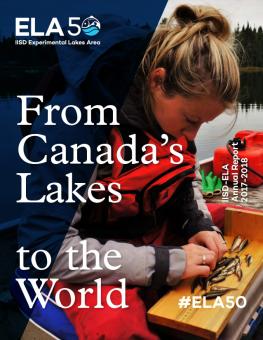
From Canada’s Lakes to the World: IISD Experimental Lakes Area Annual Report 2017-2018
In this year's IISD-ELA annual report, we explore the impact that our research has had on the world’s fresh water over the last 50 years, what the future holds, and how we are celebrating our half century.
Yes, yes, we’ve heard all the jokes—we know our lakes don’t look a day over 35.
It may come as a surprise to you that the world’s most influential 58 lakes (and their watersheds)—IISD Experimental Lakes Area—turn 50 this year. Or rather, for 50 years, these ordinary yet highly impactful lakes in a remote corner of northwestern Ontario, Canada have been the only ones in the world dedicated to long-term whole-ecosystem experimentation.
In these pages, we explore the impact that IISD-ELA’s research has had on the world’s fresh water over the last 50 years, what the future holds, and how we are celebrating our half century.
Participating experts
Scott Vaughan
Senior Fellow
Matthew McCandless
Interim VP Operations and Business Transformation
Pauline Gerrard
Interim Executive Director, IISD-ELA
Sumeep Bath
Editorial & Communications Manager, IISD-ELA
Vince Palace
Head Research Scientist, IISD-ELA
Michael Paterson
Senior Research Scientist, IISD-ELA
Lee Hrenchuk
Senior Biologist, IISD-ELA
Additional downloads
You might also be interested in
The Chemical Analysis of Fresh Water (Third Edition)
This publication describes the protocols used in the IISD Experimental Lakes Area (IISD-ELA) Analytical Service Laboratory for the measurement of chemical constituents in freshwater samples.
Northwest Ontario Side Story: IISD Experimental Lakes Area Annual Report 2022-2023
This year's annual report is a celebration of all things creative at the world's freshwater laboratory, from the science to music, photography and theatre.
Freshwater connectivity can transport environmental DNA through the landscape
A new study conducted at IISD-ELA found that the movement of water between freshwater bodies can transport eDNA which complicates the question of how accurately it can be used to monitor species.
Microplastics now pervasive in Great Lakes, with 90% of water samples surpassing safe levels for aquatic wildlife: new studies
Data spanning the last ten years reveal that the Great Lakes basin is widely contaminated with microplastics, with potentially dangerous consequences for the wildlife that live within.